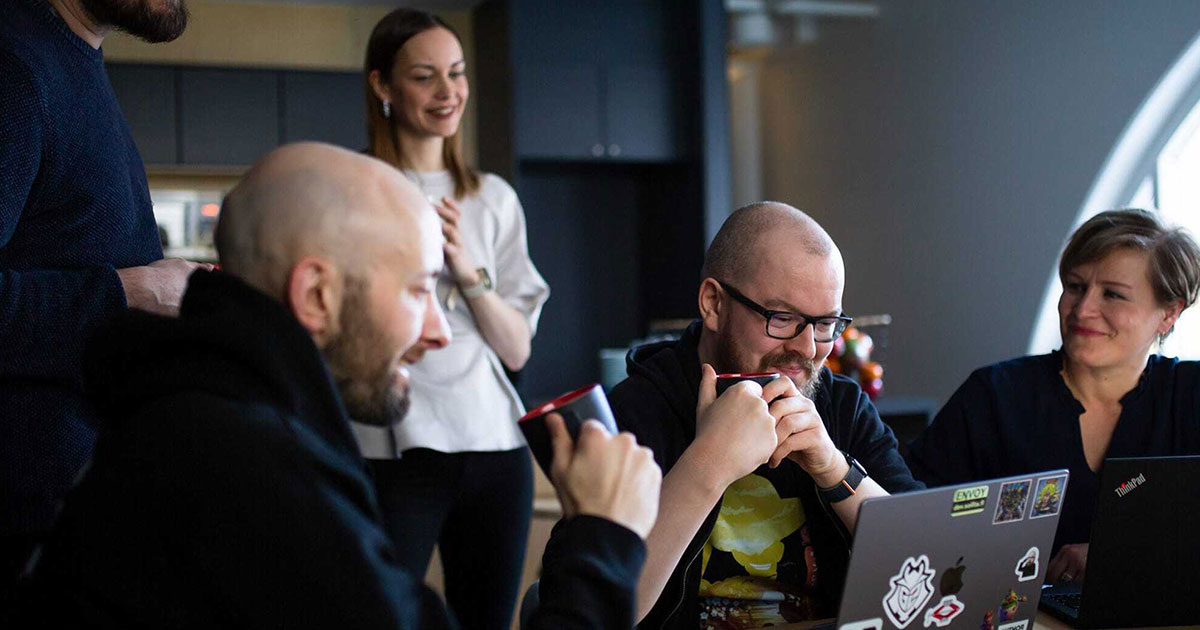Tech consultancy is a mixed bag. On the one hand: A revolving door of clients and projects! Endless opportunities to wield your talent!
On the other: You may get an exciting, innovative project… or you may find yourself (seemingly) recreating the wheel and ticking off boxes for clients with long lists of guidelines and restrictions.
But the truth is that, no matter how frustrating those guidelines may seem, there are reasons for them. And there are always ways to find space for innovation in any project.
As practitioners, we can chafe against these bounds. Or, we can embrace the challenge and choose to flex our strategic muscles between the guardrails.
Strategic thinking, led by senior Solitans
Of course, there’s a trick to that. It’s not easy to bring innovation to strict client briefs — especially if you don’t already have a strong relationship with the client, or if you aren’t that comfortable with the tech.
But that’s where experience comes into play. It’s not just about deep technical knowledge; our junior and mid-level consultants have plenty of that too.
The real strength of senior consultants lies in their ability to bring holistic, strategic thinking to projects — and using it to find opportunities for innovation.
It’s about bringing together all that technical expertise and combining it with deep industry knowledge, leadership, client understanding and strategic thinking — and using it to make educated decisions that bring the greatest impact to client projects (and, by extension, to clients’ customers and end users).
How to decide if there’s space for innovation and experimentation
First, you need to take the time to understand the underlying needs and goals of your clients. This involves asking yourself (seemingly obvious) questions like:
- Who is our client? What kind of organisation are they?
- Why are they doing this project? What is the business value?
- Who will the end users be?
- What are the pain points this project should solve?
- Are there any other needs we can meet with this project that haven’t already been considered?
You’ll also want to think about the more technical aspects of the project.
- Have we done something like this before? If yes, did we learn or make anything that could help on this project?
- How much flex do we have with the tech stack? Are there strict guidelines, or can we be freer with our choices?
- Can everything be done with the available tech requirements?
Once you have your answers, you have the base knowledge you need. From there, you can propose recommendations that align with the client’s objectives.
That makes it sound easy, but don’t forget that there’ll be a lot of unspoken things to consider — and many of these you start to learn with experience, on the job.
For example: The simple fact of whether your client is a startup, or an enterprise business or a government agency.
From that knowledge alone, you can make some quick assumptions that can help to guide your recommendations (though it is, of course, still crucial to validate ideas with stakeholders and keep communication high).
A startup may be more open to different tech and recommendations. The chances are that they’re still working things out too, so they’ll likely be more open to trying new things.
But, if the client is a huge entity? It may be harder to make things happen. Why? Because these huge organisations are often relied on by thousands of people, are subject to more scrutiny and regulations, and often have decades of legacy tech and embedded solutions to consider.
So, of course, they’ll have different appetites for ‘new’ things.
That said, don’t forget that innovation doesn’t always have to be about making something new and experimental. Sometimes it’s about doing things better than the last time — and bringing those efficiencies to future projects.
Which is why I say that innovation is always possible. Whether it’s making something from scratch, or building upon past learnings to make improvements, there’s something you will be able to do to try new things and learn.
So, don’t let a strict brief curb your brain!
In search of career opportunities? Take a look at our job openings across various locations!

